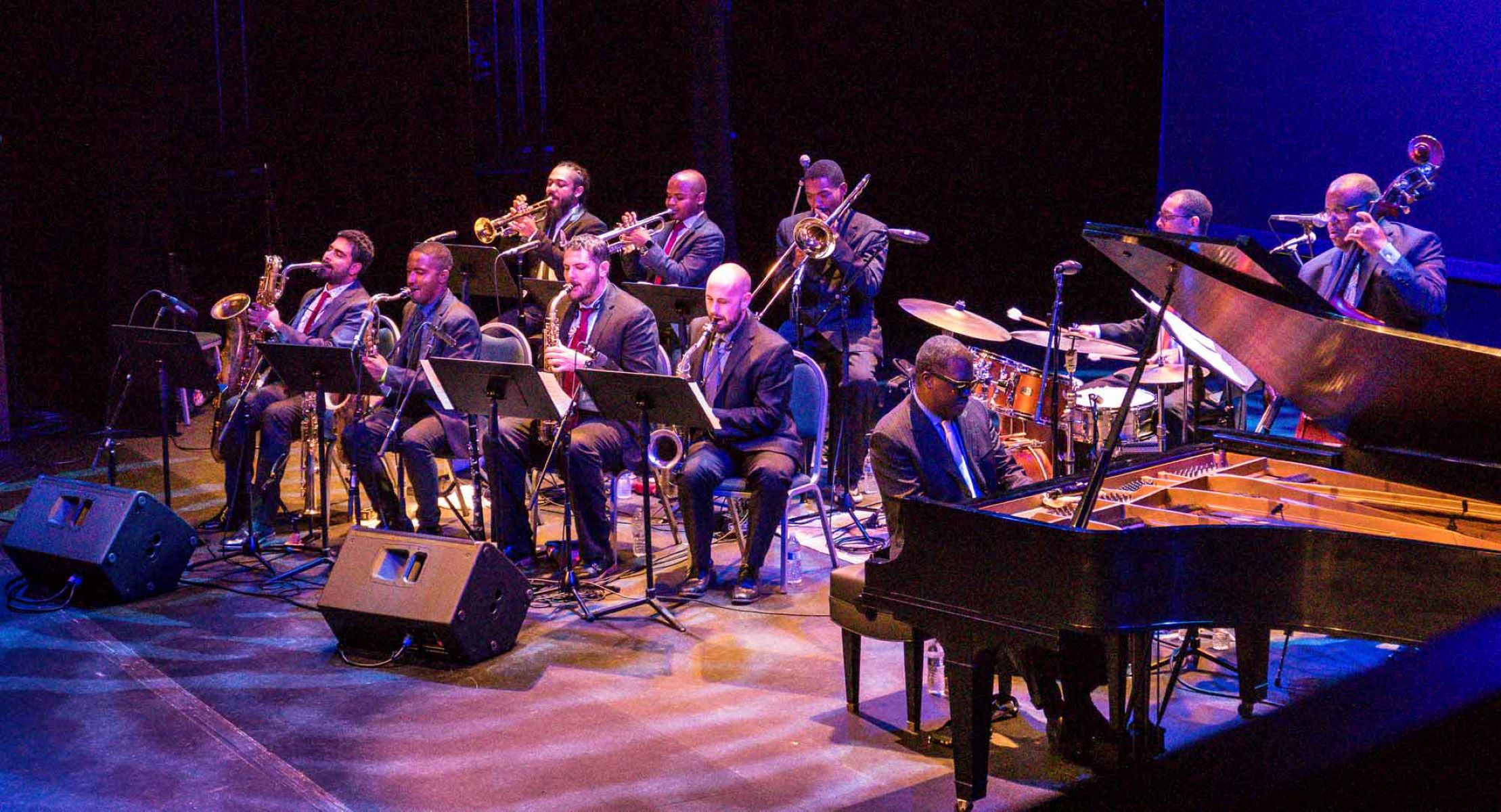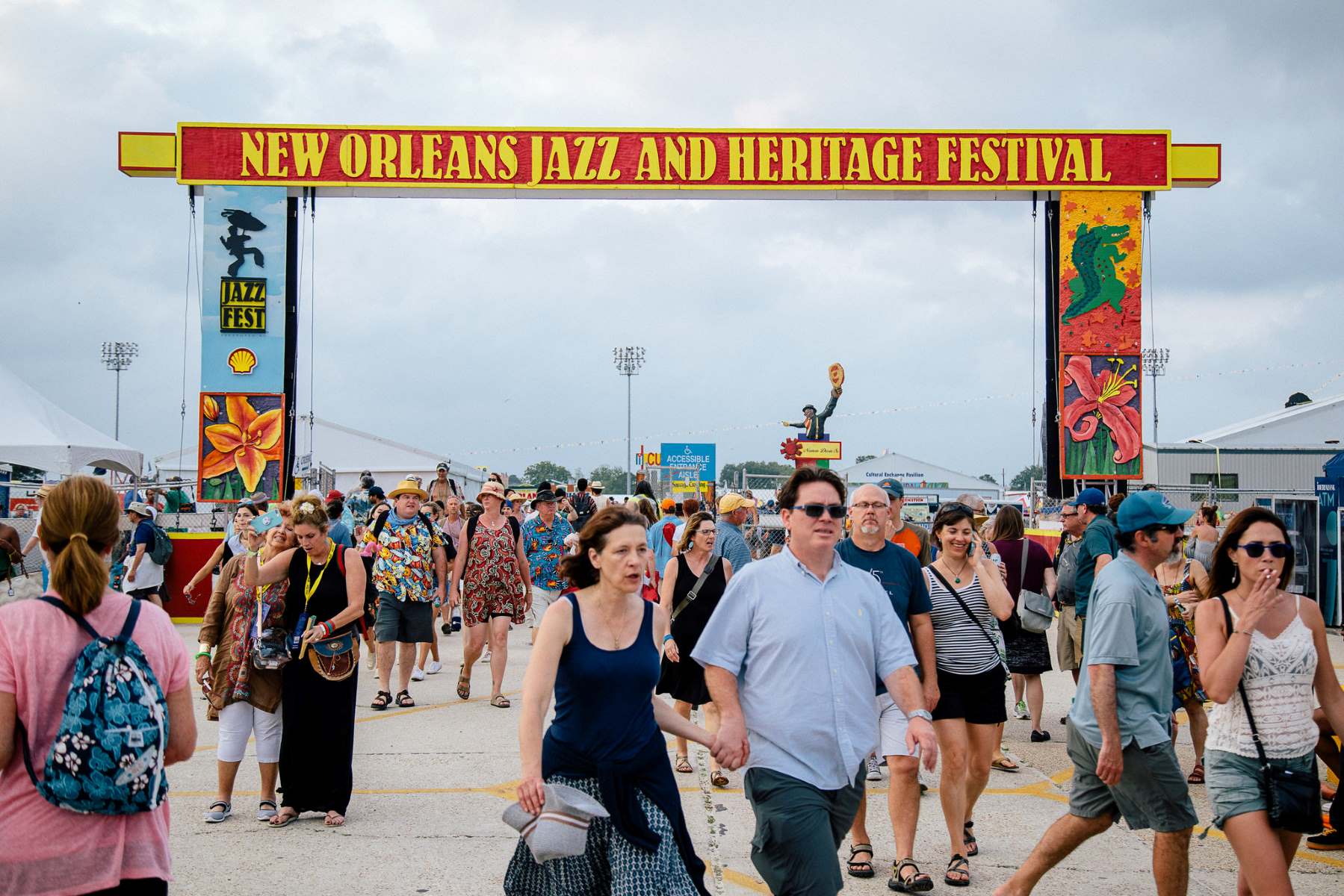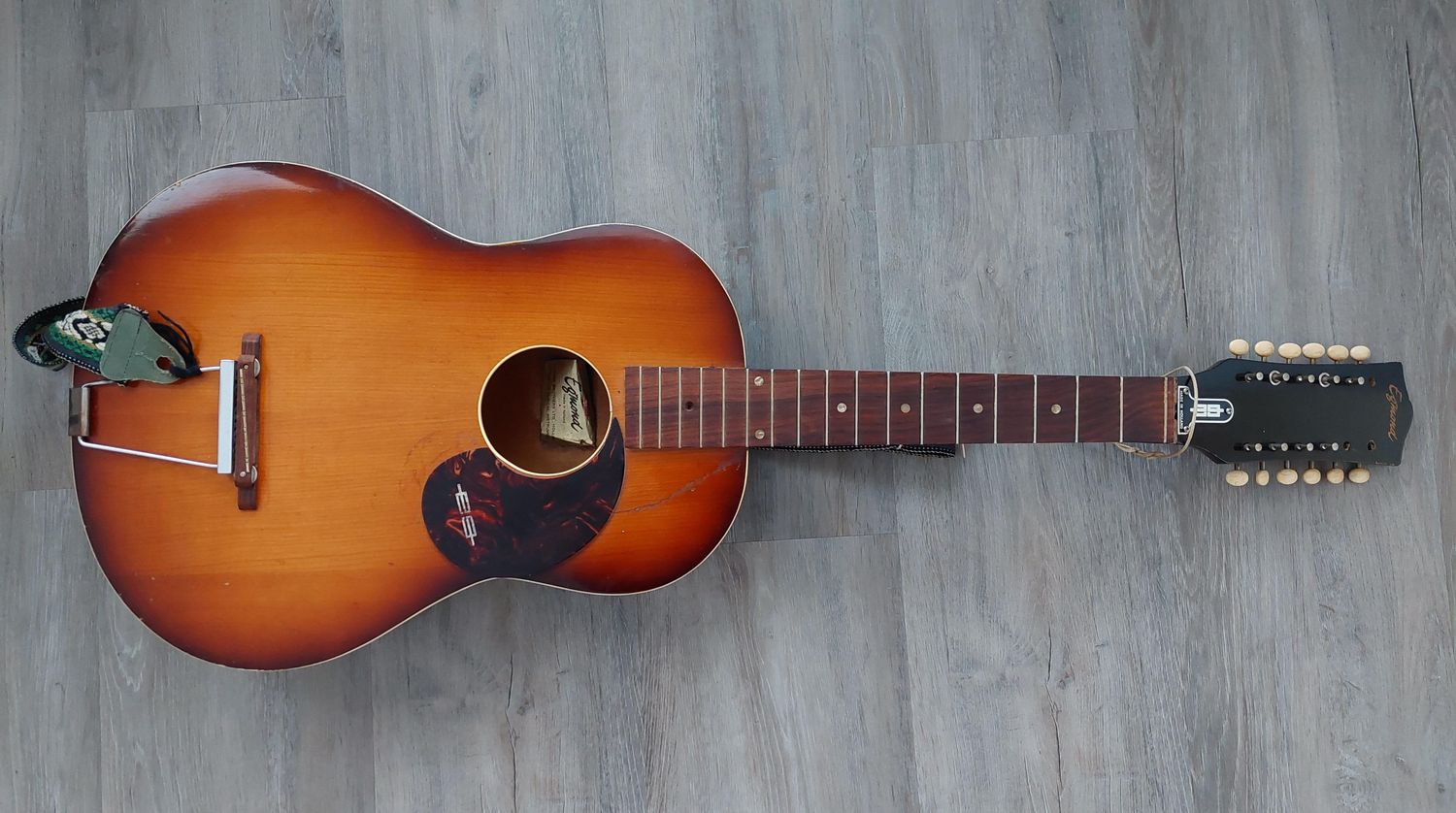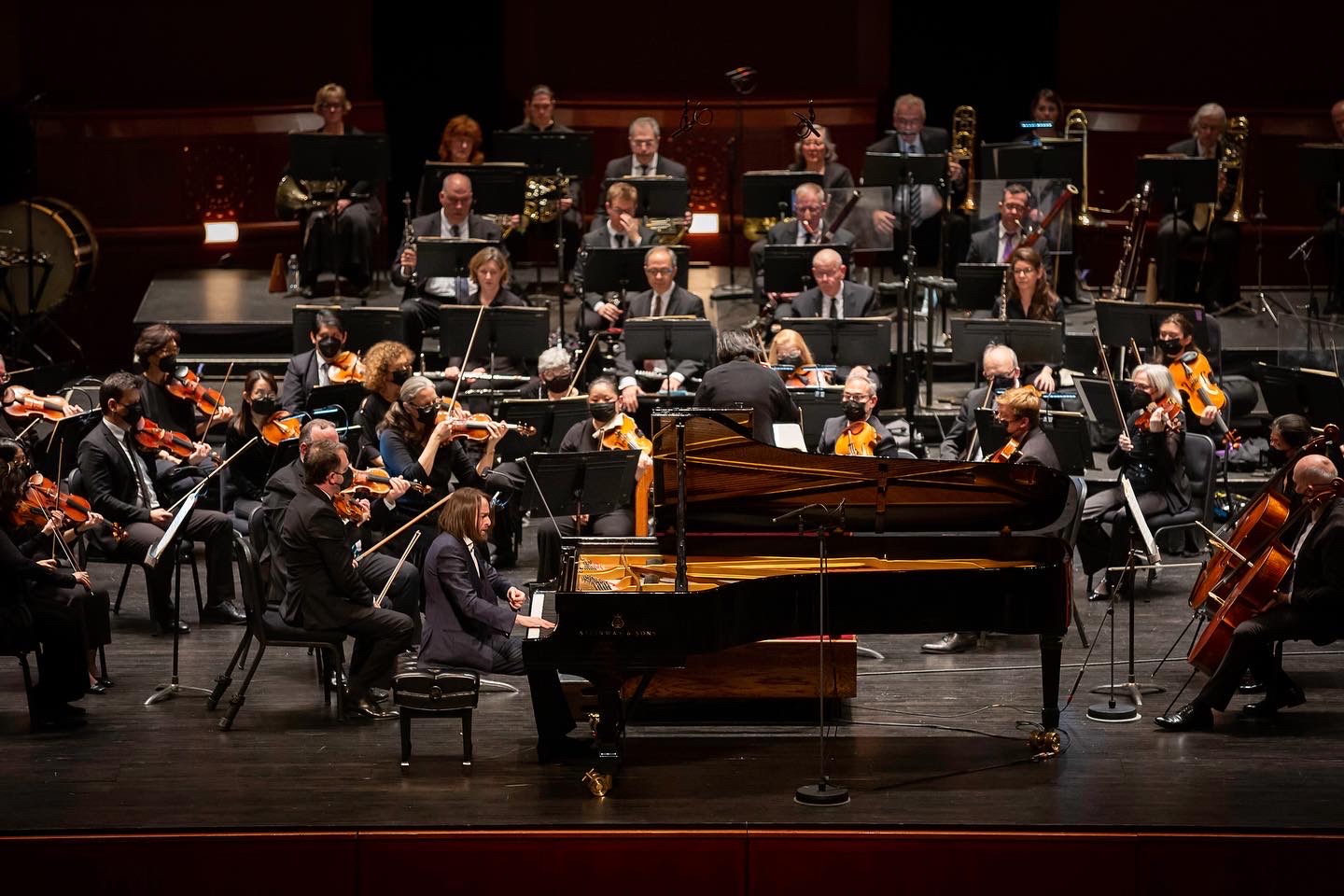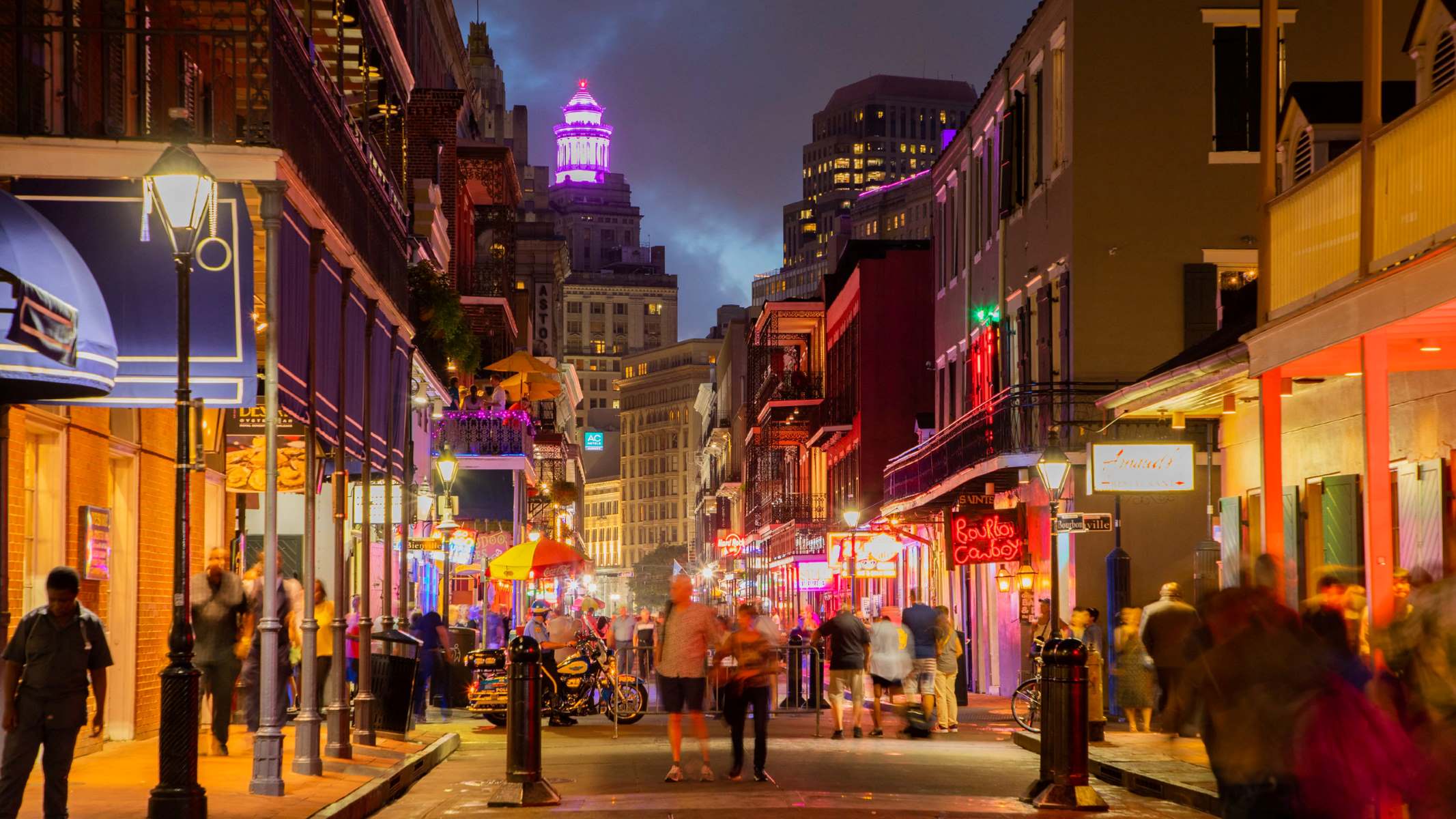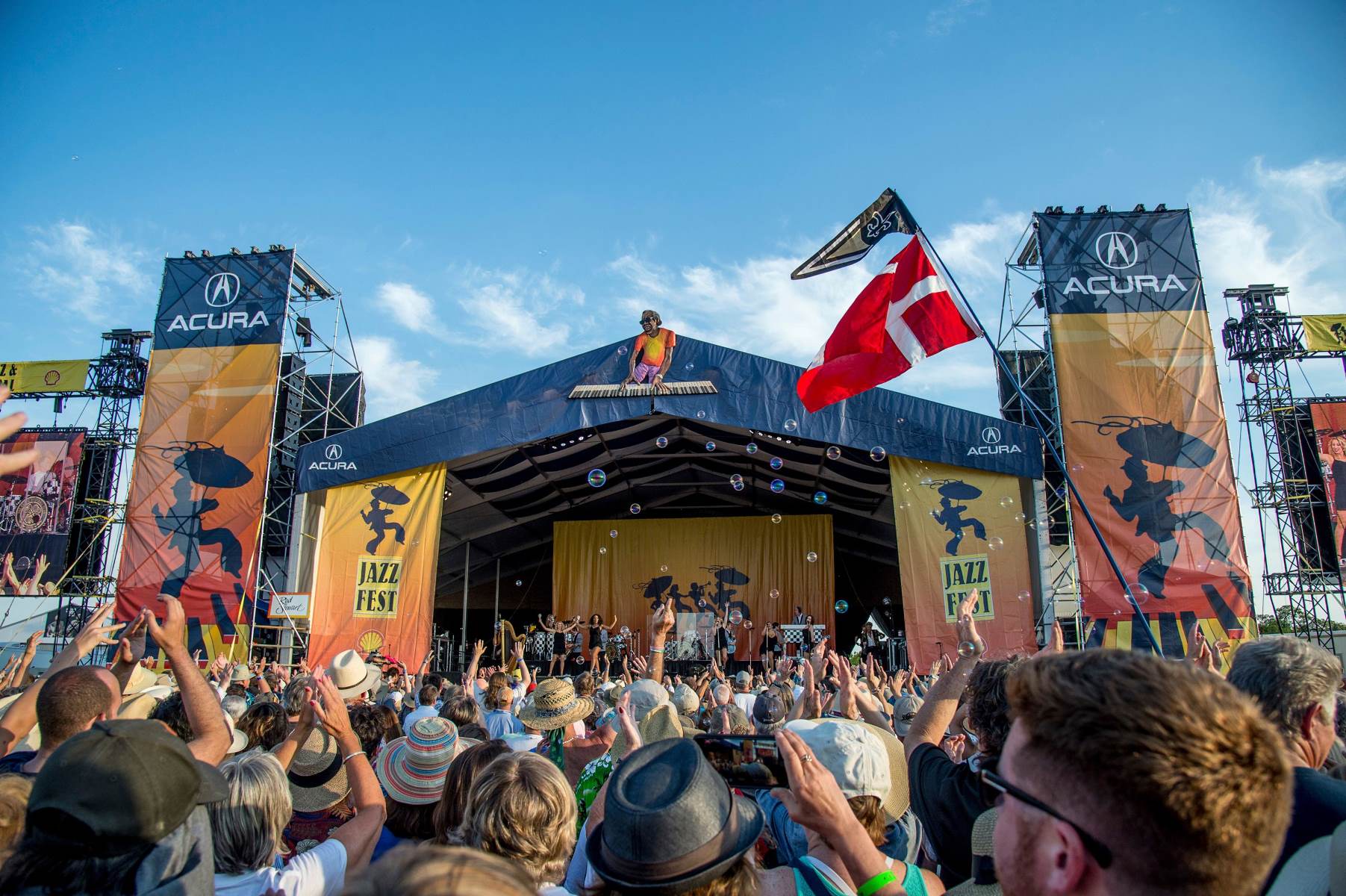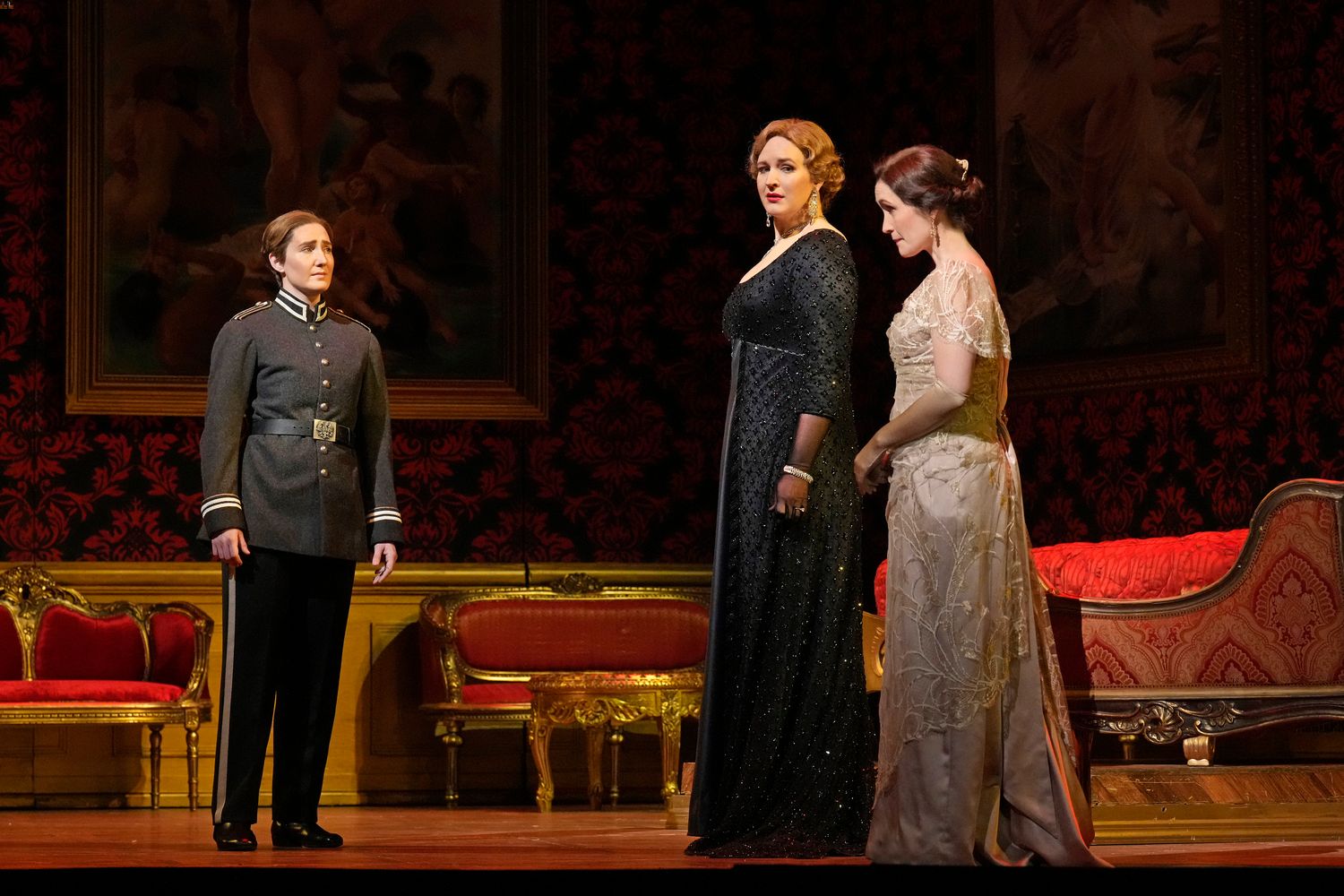Home>Genres>Jazz>What Part Of New York Was The Capital Of Jazz
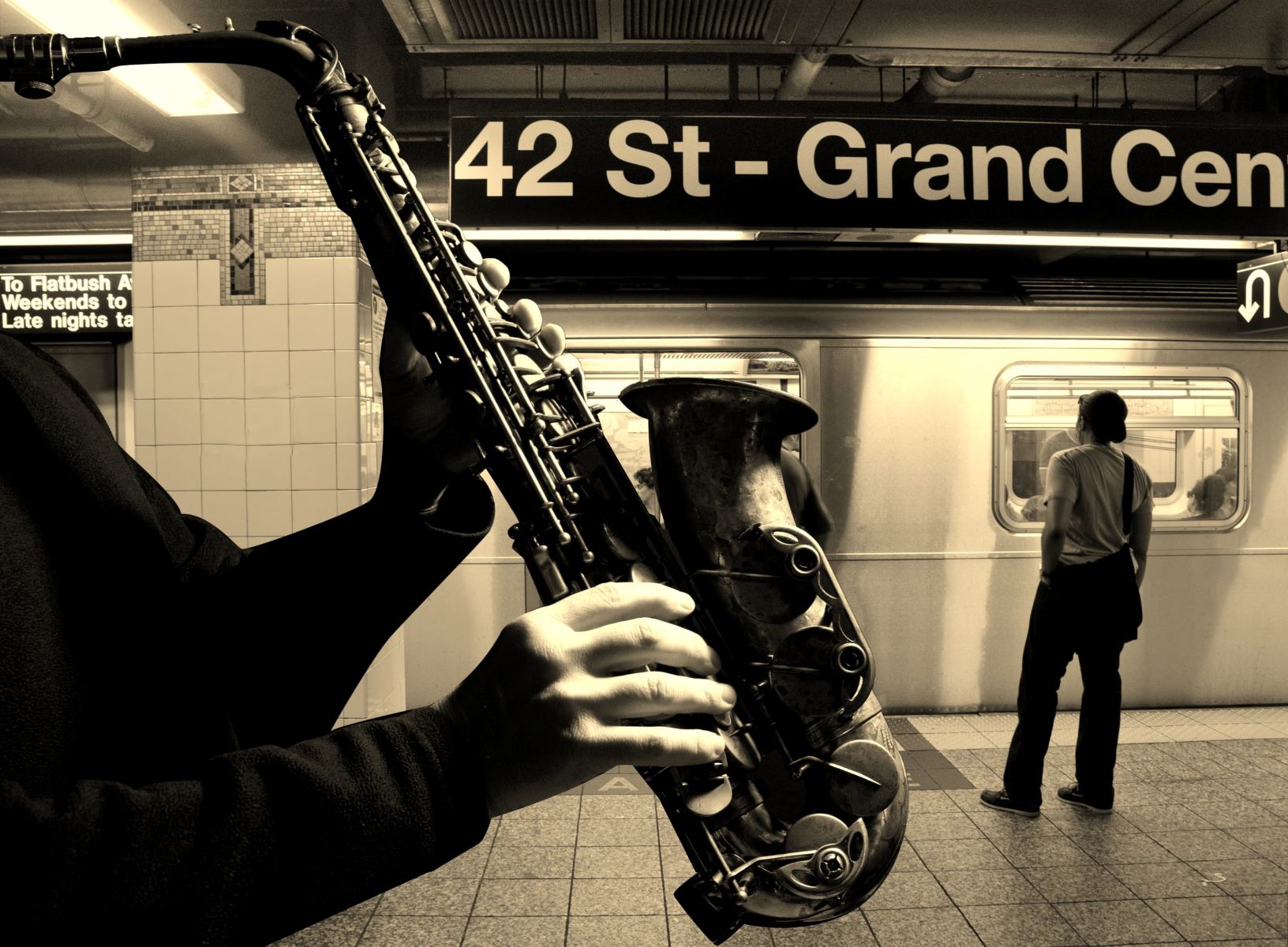

Jazz
What Part Of New York Was The Capital Of Jazz
Modified: February 24, 2024
Explore the vibrant jazz scene in the capital of jazz in New York. Immerse yourself in the rich history and soulful sounds that have shaped this iconic genre.
(Many of the links in this article redirect to a specific reviewed product. Your purchase of these products through affiliate links helps to generate commission for AudioLover.com, at no extra cost. Learn more)
Table of Contents
Introduction
When it comes to the rich history and vibrant culture of jazz, few places hold as much significance as New York City. From its early origins in the 1920s to the groundbreaking innovations of the bebop era, the city has served as the epicenter of this dynamic genre. New York City’s thriving jazz scene not only attracted talented musicians from all over the country, but it also became a hotbed for innovation, collaboration, and artistic expression.
With its bustling clubs, legendary venues, and a diverse and passionate audience, New York City offered a unique platform for jazz musicians to showcase their skills and experiment with new sounds. The city’s vibrant energy and melting pot of cultures provided fertile ground for the evolution of jazz, making it the capital of this groundbreaking music genre.
From the Harlem Renaissance to the birth of bebop, and the influence of swing and big band era, to the endless recording studios that dotted the city, New York played a crucial role in shaping the development and legacy of jazz. In this article, we will explore the different chapters in New York City’s jazz journey and uncover the reasons why it emerged as the capital of jazz.
Join us as we delve into the fascinating history of jazz in the heart of New York City, tracing the footsteps of jazz legends, experiencing the vibrant rhythms, and discovering the enduring legacy that continues to resonate in the city’s streets to this day.
Early Origins of Jazz in New York
The roots of jazz in New York City can be traced back to the early 20th century when African American musicians from New Orleans and other southern cities migrated north in search of better opportunities. This migration brought a rich blend of musical traditions, including ragtime, blues, and spirituals, which laid the foundation for what would eventually become known as jazz.
One of the earliest and most influential figures in New York City’s jazz scene was the legendary pianist and composer, James P. Johnson. Known as the “Father of Stride Piano,” Johnson’s innovative playing style combined elements of ragtime with a more complex improvisational approach, setting the stage for the evolution of jazz in the city.
Another important figure in the early history of jazz in New York was the trumpet player and bandleader, Ferdinand “Jelly Roll” Morton. Morton’s groundbreaking recordings, such as “Black Bottom Stomp” and “Dead Man Blues,” showcased the syncopated rhythms and improvisation that would become defining characteristics of jazz.
In the 1920s, the Harlem neighborhood became a vibrant hub for African American culture and creativity. It was in Harlem where jazz truly flourished, with venues like the Cotton Club and the Savoy Ballroom hosting performances by some of the era’s greatest musicians, including Duke Ellington, Louis Armstrong, and Count Basie.
The integration of jazz and dance during this time gave rise to the energetic and infectious style of music known as “swing.” The big band era, with its larger ensembles and intricate arrangements, further brought jazz into the mainstream, captivating audiences across the city.
As the 1920s gave way to the 1930s, the Great Depression posed significant challenges to New York City’s jazz scene. Despite economic hardships, jazz continued to thrive as musicians found ways to adapt and persevere. The city became a melting pot of different jazz styles, fostering a spirit of collaboration and musical innovation.
The early origins of jazz in New York City laid the groundwork for the genre’s future growth and influence. The fusion of different musical traditions, the vibrant energy of Harlem, and the resilience of jazz musicians all contributed to the city’s emergence as the capital of jazz.
The Harlem Renaissance and Jazz
The Harlem Renaissance, a cultural and artistic movement that emerged in the 1920s, played a significant role in shaping the development and popularization of jazz in New York City. This period represented a cultural awakening for the African American community in Harlem and served as a platform for their artistic expression, including the music of jazz.
During the Harlem Renaissance, jazz became a symbol of the African American experience, capturing the essence of their struggles, triumphs, and aspirations. Musicians such as Duke Ellington, Count Basie, and Louis Armstrong came to prominence during this era, using their music to express their unique perspectives and challenge societal norms.
The Cotton Club, one of Harlem’s most iconic venues, became a central hub for jazz during the Harlem Renaissance. Known for its extravagant performances and a racially segregated audience, the club featured renowned African American jazz musicians. It provided them with a platform to showcase their talents, despite the racial prejudices of the time.
One of the pivotal figures of the Harlem Renaissance was Duke Ellington, whose innovative compositions and performances pushed the boundaries of jazz. His orchestra at the Cotton Club became legendary, defining the sound of the era and creating a distinct Harlem style that captivated audiences nationwide.
The Harlem Renaissance also saw the rise of talented female jazz musicians such as Bessie Smith, Ethel Waters, and Billie Holiday. Their contributions and unique vocal styles added a new dimension to the genre and solidified their place in jazz history.
Beyond the music, the Harlem Renaissance fostered a sense of community and intellectual exchange. Poets, writers, and artists gathered in Harlem’s vibrant cultural scene, influencing and being influenced by the jazz musicians of the time. This cross-pollination of artistic disciplines further enriched the evolution of jazz as an art form.
The Harlem Renaissance was a turning point for jazz in New York City and the broader American cultural landscape. It showcased the immense talent and creativity of African American artists, breaking down racial barriers, and elevating jazz to new heights. The movement not only transformed the music but also helped shape the identity and representation of African Americans in society.
The legacy of the Harlem Renaissance continues to be celebrated today, with its impact on jazz felt in the music of contemporary artists who draw inspiration from this influential period in New York City’s history.
The Birth of Bebop in New York City
In the 1940s, New York City witnessed a groundbreaking shift in jazz with the emergence of a new and revolutionary style known as bebop. This genre, characterized by its complex harmonies, fast tempos, and virtuosic improvisation, represented a departure from the traditional swing era and brought about a new era of musical innovation.
Bebop was born out of the creativity and experimentation of a group of young and talented musicians, who sought to break free from the constraints of commercialism and explore new artistic possibilities. Pioneers such as Charlie Parker, Dizzy Gillespie, Thelonious Monk, and Bud Powell pushed the boundaries of jazz, challenging conventional norms and redefining the genre.
New York City became the epicenter of the bebop movement, as musicians congregated in small clubs and jam sessions, such as Minton’s Playhouse and Monroe’s Uptown House. These intimate settings allowed for the cultivation of bebop’s intricate and complex language, as musicians engaged in rapid-fire exchanges and pushed each other to new heights of musical expression.
The birth of bebop in New York City was not only a musical revolution but also a cultural and social one. The music of bebop, with its emphasis on individual expression and intellectual complexity, reflected the changing times and aspirations of African American artists during the era of racial segregation and social inequality.
Bebop challenged the status quo, both musically and socially, and demanded a deeper level of understanding and engagement from both musicians and listeners. Its intricate melodies and rapid tempo showcased the technical prowess of the musicians, raising the bar for jazz performance and composition.
The bebop movement also had a profound influence on future generations of jazz musicians. Its emphasis on individuality and innovation laid the foundation for the development of various jazz sub-genres and the continued evolution of the art form.
Today, the legacy of bebop continues to resonate in the jazz community. Its innovative spirit and dedication to artistic expression left an indelible mark on the genre, shaping the course of jazz in New York City and beyond. The birth of bebop in New York City represents a significant chapter in the history of jazz, showcasing the city’s ability to nurture and catalyze groundbreaking musical movements.
The Influence of Swing and Big Band Era in New York
In the 1930s and 1940s, New York City experienced a cultural revolution with the rise of the swing and big band era. This period marked a shift in jazz, as large ensembles and orchestras took center stage, captivating audiences with their infectious rhythms and exhilarating performances.
Swing music, with its emphasis on danceable rhythms and catchy melodies, became a phenomenon that swept across the nation. Big band leaders such as Benny Goodman, Count Basie, and Glenn Miller led their orchestras to great success, filling ballrooms and dance halls across New York City with eager dancers and enthusiastic fans.
New York City’s vibrant jazz scene provided a fertile ground for swing and big band music to flourish. Iconic venues like the Savoy Ballroom, the Roseland Ballroom, and the Apollo Theater hosted legendary performances, attracting a diverse audience and nurturing the growth of this captivating style.
Not only did swing and big band music ignite a dance craze, but they also showcased the exceptional talents of jazz musicians. The big bands served as showcases for virtuoso instrumentalists, with dazzling solos and tight ensemble playing. Legendary musicians such as saxophonist Coleman Hawkins, trumpeter Roy Eldridge, and drummer Gene Krupa became household names, elevating their instruments to new levels of prominence.
The influence of swing and the big band era extended beyond the music itself. The big bands provided opportunities for talented arrangers and composers to create intricate and innovative arrangements, pushing the boundaries of jazz composition. Additionally, the collaborative nature of the big band format fostered a sense of camaraderie and synergy among musicians, leading to unforgettable performances and groundbreaking recordings.
New York City’s prominence as the hub of the recording industry further solidified its role in popularizing swing and big band music. Record labels such as RCA Victor, Decca, and Columbia flocked to the city, capturing the vibrant energy and dynamic sounds of the swing era. These recordings helped disseminate the music to a wider audience and contributed to the lasting legacy of the swing and big band movements.
The influence of swing and big band music can still be felt in contemporary jazz. The elements of rhythm, harmony, and ensemble playing that defined the era continue to inspire and shape the music of modern jazz musicians.
New York City’s embrace of swing and big band music allowed these genres to reach new heights of popularity and artistic achievement. The city’s bustling jazz clubs, enthusiastic audiences, and innovative musicians all contributed to making New York City a vital epicenter of swing and big band music.
New York City as the Hub of Jazz Recordings
In addition to its vibrant live jazz scene, New York City emerged as a major hub for jazz recordings in the 20th century. The city’s recording studios and labels played a pivotal role in capturing and disseminating the music of jazz legends, preserving their performances for posterity.
Record labels such as Blue Note Records, Columbia Records, and Verve Records, among others, set up shop in New York City, attracting top jazz talent and producing iconic recordings. These labels recognized the artistic value and commercial potential of jazz, leading to a flourishing recording industry in the city.
New York’s recording studios became meeting places for jazz musicians, producers, and engineers, fostering collaboration and innovation. With their state-of-the-art equipment and experienced staff, these studios helped to capture the energy, spontaneity, and nuances of live jazz performances, ensuring that these musical moments would be preserved for generations to come.
One legendary studio was Rudy Van Gelder’s Englewood Cliffs studio in New Jersey, just outside New York City. Many iconic jazz records were recorded there, including albums by John Coltrane, Miles Davis, and Thelonious Monk. The studio’s innovative recording techniques and Van Gelder’s meticulous engineering contributed to the distinctive sound quality that characterized jazz recordings of the time.
New York City’s role as a recording hub not only impacted the careers of established jazz musicians, but it also provided a platform for emerging artists to showcase their talents. The city’s vibrant jazz community allowed aspiring musicians to connect with established artists and industry professionals, opening doors to recording opportunities and potential career breakthroughs.
Furthermore, the availability of recording studios in New York City attracted jazz musicians from around the country, eager to make their mark in the industry. The city’s diverse and dynamic musical ecosystem provided fertile ground for experimentation and collaboration, leading to the creation of groundbreaking recordings that pushed the boundaries of jazz.
These recordings not only shaped the evolution of jazz but also influenced the broader cultural landscape. Jazz recordings became a medium through which listeners across the country and around the world could experience the spirit, creativity, and innovation of New York City’s vibrant jazz scene.
Today, many of these historic jazz recordings continue to be revered as classics, capturing the essence and brilliance of the musicians who called New York City their home. The city’s legacy as a hub of jazz recordings remains an integral part of its identity and cements its status as the capital of jazz.
The Legacy of New York as the Capital of Jazz
The impact of New York City on the world of jazz cannot be overstated. Its rich history, thriving live scene, and influential recording industry have solidified its status as the capital of jazz and left an indelible legacy on the genre.
New York City’s jazz legacy can be seen in the countless jazz clubs that have graced its streets. From the iconic Village Vanguard and Birdland to the historic Blue Note and Smalls Jazz Club, these venues have provided stages for legendary performances by jazz luminaries for decades. They continue to showcase the best in jazz, attracting both established and up-and-coming musicians from around the world.
The city’s educational institutions also play a significant role in preserving and perpetuating jazz. Renowned music schools such as Juilliard, The New School, and Manhattan School of Music offer jazz programs that nurture and develop the talents of future jazz musicians. These institutions serve as breeding grounds for innovation, ensuring that the legacy of jazz in New York City will endure for generations to come.
New York City’s influence extends beyond its physical boundaries. Through recordings, films, and media, the sounds and stories of New York jazz have reached audiences worldwide. Iconic albums recorded in the city, such as Miles Davis’ “Kind of Blue” or John Coltrane’s “A Love Supreme,” have become cornerstones of jazz, shaping the direction of the genre and inspiring countless musicians and listeners.
The cultural impact of jazz in New York City can also be seen in the city’s diverse communities. Jazz has continuously embraced and blended different cultural influences, from the African American roots of the music to the contributions of immigrant communities and the global reach of jazz fusion. New York City’s status as a melting pot of cultures has allowed jazz to evolve and adapt, igniting new creative pathways and fostering cross-cultural collaborations.
Furthermore, New York City’s jazz legacy extends beyond the music itself. The city has been a catalyst for social change, using the genre as a means of expressing societal issues and advocating for justice. Jazz has been a tool for bringing awareness to civil rights, equality, and the struggles of marginalized communities, carrying on the tradition of protest and social commentary that has been inherent in the music since its inception.
Today, as jazz continues to evolve and push boundaries, New York City remains at the forefront of the genre. Its vibrant and ever-changing jazz landscape, filled with talented musicians, dedicated audiences, and historic venues, ensures that the legacy of New York as the capital of jazz will live on for generations to come.
Conclusion
New York City has rightfully earned its place as the capital of jazz. From the early origins of jazz in the city’s clubs and speakeasies to the revolutionary birth of bebop, the influence of swing and big band era, the thriving recording industry, and the vibrant jazz scene that continues to captivate audiences today, New York City has been a driving force in shaping the evolution and legacy of jazz.
The city’s rich history and cultural diversity have provided fertile ground for jazz musicians to showcase their talents, collaborate with other artists, and push the boundaries of the genre. New York City’s vibrant energy, bustling clubs, and legendary recording studios have attracted both established and aspiring musicians, creating a melting pot of creativity and innovation that has propelled the genre forward.
The legacy of New York City as the capital of jazz can be felt not only in the music but also in its impact on society and culture. Jazz has been a voice for social change, a medium for expressing the struggles and triumphs of marginalized communities, and a driving force in bridging cultural divides. It has inspired generations of musicians and touched the souls of listeners around the world, carrying the spirit of New York wherever it goes.
As we reflect on the vibrant history and ongoing influence of jazz in New York City, we are reminded of the power of music to transcend boundaries, connect people, and serve as a vehicle for artistic expression. The city’s legacy as the capital of jazz continues to be celebrated, ensuring that the rich tapestry of jazz will continue to thrive and evolve, leaving an indelible mark on the cultural fabric of New York City and beyond.

